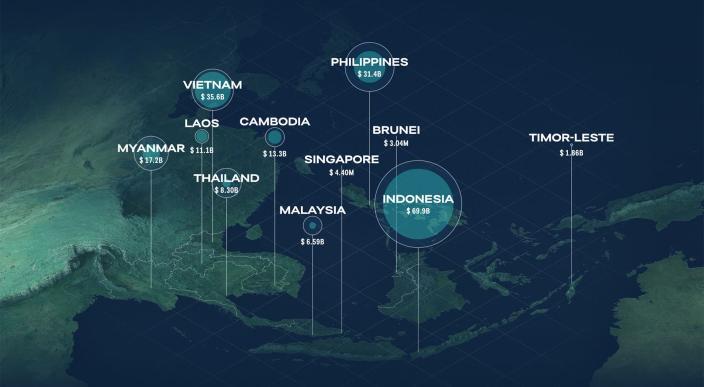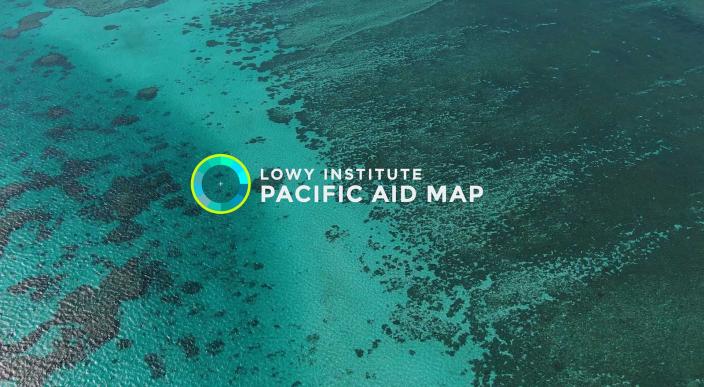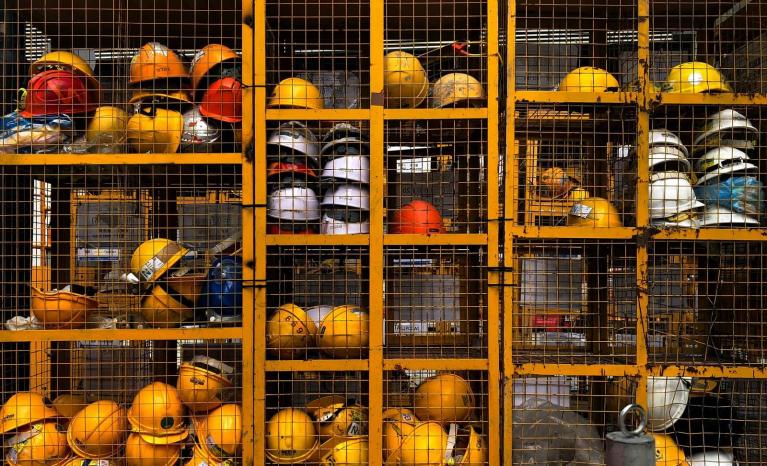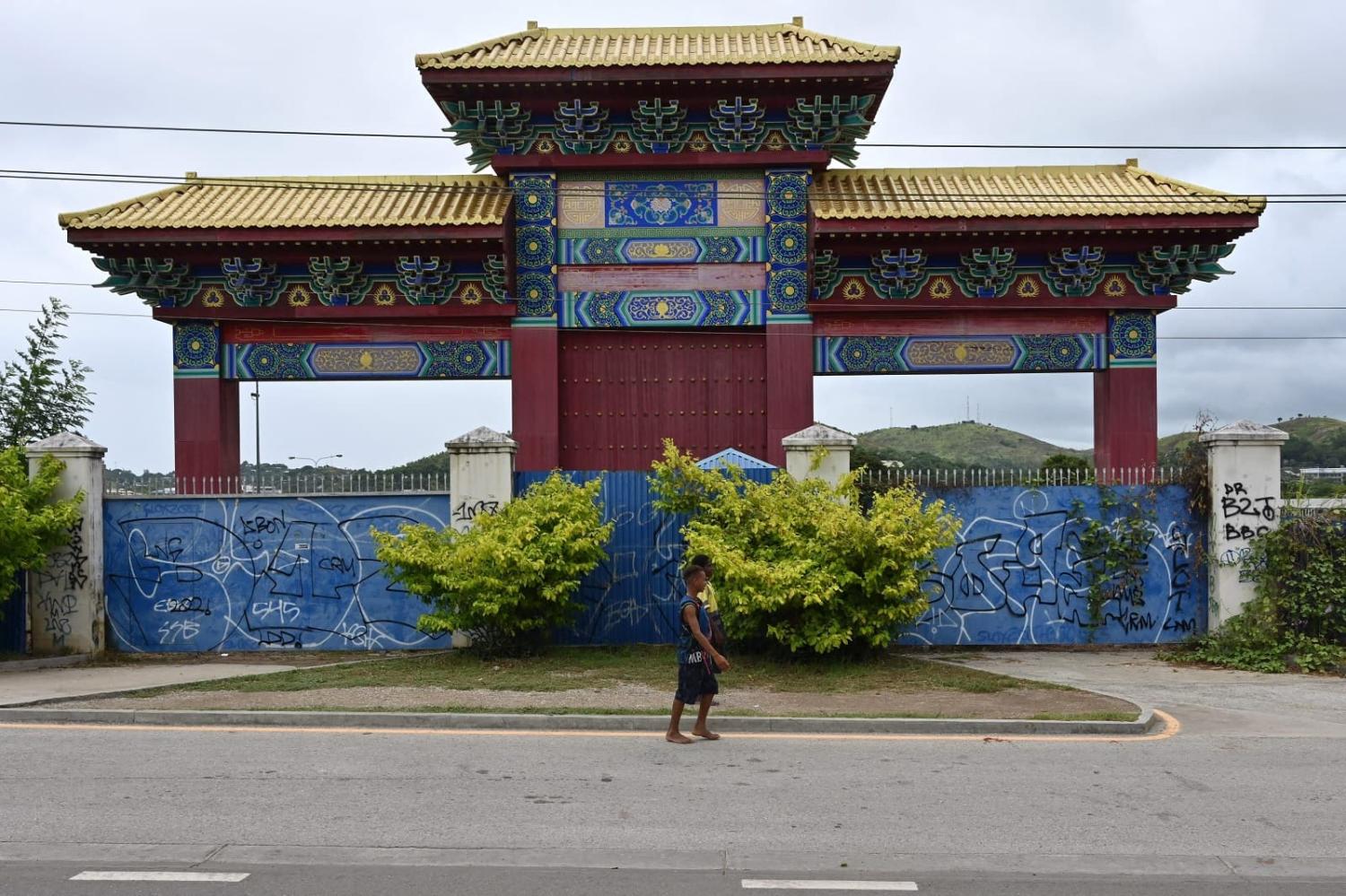- China has become Southeast Asia’s largest infrastructure financing partner. Yet there is an enormous gap between what Beijing promises and what it has delivered, amounting to more than $50 billion in unfulfilled project financing with more than half of this reflecting projects that have either been cancelled, downsized, or otherwise seem unlikely to proceed.
- The reasons for this gap include China’s almost exclusive focus on financing ambitious megaprojects especially prone to problems and delays but also political instability in partner countries, weak stakeholder consultation, and increasingly stranded fossil fuel projects.
- China is, however, learning from experience, shifting away from megaprojects towards smaller programs and lifting its focus on risk management, project preparation, financial due diligence, and higher environmental and social standards.
Mind the gap Ambition versus delivery in China’s BRI megaprojects in Southeast Asia
The large-scale infrastructure projects launched under China’s ambitious Belt and Road Initiative (BRI) are now a prominent feature of Southeast Asia’s development landscape. China is involved in 24 out of the region’s 34 infrastructure megaprojects — those costing $1 billion or more — and is easily the largest infrastructure financing partner.
These projects respond to real and immediate needs in the region. But there is a significant gap between China’s promises and its implementation, between what Beijing commits to and what it delivers. This gap amounts to more than $50 billion in unfulfilled project financing, with more than half allocated to projects that have been cancelled, downsized, or otherwise seem unlikely to proceed. In addition, new project deals signed by China in the region have declined significantly in recent years, in line with the global fall in China’s overseas infrastructure financing. Understanding the reasons behind these patterns is important in the context of both Southeast Asia’s development and geostrategic competition in the region.
Examining the factors that have hindered China’s ability to deliver is critical to judging the success or failure of the BRI’s ambition in the region and understanding what might happen next.
One obvious hypothesis is that the Covid-19 pandemic impacted Chinese project implementation, due to restrictions on travel and the flow of workers and goods across borders, as well as local measures to combat the spread of the virus. In 2020, the Chinese Ministry of Foreign Affairs stated that 20% of BRI projects were “seriously affected” by Covid-19. Our analysis reveals a more nuanced picture.
In 2021, disbursement figures were indeed 18% lower compared to 2020. However, 2020 numbers were higher than 2019 due to the ongoing disbursement of funds for significant infrastructure projects in the initial phase of the pandemic. In fact, disbursements in the transport sector were higher during the pandemic compared to previous years. Meanwhile, disbursements in the energy sector, which is the second-largest sector for Chinese development investment in Southeast Asia, had been declining since 2017 — well before the pandemic and reflecting the completion of a number of large projects.
Pandemic disruptions therefore provide only a partial explanation. Other factors appear to have been far more instrumental in China’s low project implementation rate in Southeast Asia. These factors include the nature and scale of the projects, political instability, local stakeholder engagement, and the global energy transition.
Nature and scale
Chinese projects in the region are typically large and highly ambitious. Almost 90% of Chinese ODF projects are focused on infrastructure, which is particularly susceptible to delays and schedule slippage compared to other sectors, such as health and education. Issues including permits, regulatory approvals, environmental assessments, land acquisition challenges, bureaucratic procedures, and logistical obstacles contribute to delays. On average, development partners experience an 11% lower project implementation rate in the infrastructure sector than in other sectors.
China’s bias towards megaprojects amplifies the risk. Some estimates suggest that, on average, nine out of ten megaprojects exceed their allocated timeline and budget. There are 34 infrastructure megaproject commitments recorded in the Southeast Asia Aid Map — 24 from China, 6 from Japan, 3 from the ADB, and 1 from Korea. Each of China’s competitors are boasting higher completion success rates for those megaprojects.
To assess the success of China’s most ambitious projects, we investigated these 24 megaprojects. All were either active or committed between 2015 and 2021, representing a substantial majority (85%) of China’s infrastructure commitments in the region. Some key facts:
- Fourteen of these megaprojects are in energy generation or transmission (10 fossil fuel, 4 hydropower) and the remaining 10, equivalent to 70% of the total commitment value, are in the transport sector (7 railways, 1 airport, 1 bridge, 1 port). That sectoral distribution is typical of the BRI’s focus on physical economic connectivity.
- The 24 projects were worth a combined $77 billion in financing commitments but represent more than $52 billion in implementation shortfalls. The average completion rate across those 24 projects is 33%.
- Eight projects worth about $16 billion have been completed, while another eight, worth $35 billion, are on track (although two of those have been substantially downsized). Five projects worth $21 billion have been cancelled, while another three projects worth $5 billion seem unlikely to proceed.
BRI megaproject status up to 2022
- East Coast Rail Link$12.08B52.9%
- Thai-China Railway$12B5.8%
- Mandalay-Kyaukphyu Railway Project$7.6B0%
- Three Airports High Speed Rail Project$6.89B0%
- Jakarta-Bandung High Speed Rail$4.5B100%
- Construction of the Panay-Guimaras-Negros Inter-Island Bridge$3.64B0%
- South Long-Haul Railway (Bicol Line)$2.95B0%
- Myanmar-China Oil Pipeline Construction Project$2.4B100%
- Nam Ou Hydropower Project Phase I$2.4B100%
- Pak Lay Hydropower Project$2.13B0%
- Xekong Coal Electricity Integration Project$2.1B0%
- Vinh Tan 3 Power Plant$2B0%
- Nam Dinh 1$1.89B0%
- Java 7 Power Station$1.8B100%
- Vinh Tan 1 Power Plant$1.76B100%
- Mindanao Railway$1.57B0%
- Kyaukphyu Special Economic Zone Deep-Sea Port Project$1.5B0%
- Nam Ngum 3 Hydropower Plant, Laos$1.29B84%
- Multi-Product Pipeline$1.21B14.5%
- Bangko Tengah Sumsel-8 Coal Fired Power Station$1.2B100%
- Phnom Penh Airport Project$1.1B55%
- Trans-Sabah Gas Pipeline$1.02B11.4%
- Duyen Hai 3 Coal-Fired Power Plant$1B100%
- Nam Ou Hydropower Project Phase II$1B100%
We attribute the low implementation rate of China’s megaprojects in Southeast Asia to a combination of several factors.
Political instability
Domestic political changes and, in some cases, instability in Southeast Asian nations have posed challenges for China’s BRI projects. Frequent changes in governments and policy directions have led to fragmented decision-making, with different factions or parties having divergent views and priorities. Political instability has also often coincided with corruption and weak governance.
The East Coast Rail Link (ECRL) project in Malaysia is a notable example, where the financial arrangements with China became politically contentious, leading to suspensions or renegotiations with each change of government. The project was initially announced in 2016 by then Prime Minister Najib Razak, who was embroiled in a corruption scandal at the time. The project was suspended in 2018 by Prime Minister Mahathir Mohamed, who then realigned and renegotiated it with reduced costs in 2019. Later, under Prime Minister Ismail Sabri Yaakob, the project reverted to its original plan. Anwar Ibrahim, Malaysia’s current prime minister, has agreed to continue the project, albeit with yet another substantial haircut.
The 2018 suspension of the ECRL was accompanied by the simultaneous cancellation of two other megaprojects in Malaysia — the Multi-Product Pipeline (MPP) and Trans-Sabah Gas Pipeline (TSGP) . Loans were secured for both projects from the Export-Import Bank of China (China EXIM) in March 2017. Revelations emerged in 2018 that almost 90% of the contract value had been paid out to the contractor, China Petroleum Pipeline Bureau (CPPB), despite only a small fraction of the work having been completed. In the aftermath, at least $330 million was seized from CPPB — equivalent to approximately 14% of the total combined contract value. At least one of the two projects, the TSGP, appears to have been initiated without any environmental impact assessment, feasibility study, or proper land acquisition process. The ECRL, MPP, and TSGP were all afflicted by corruption allegations, and the resulting political fallout led to severe implementation difficulties. To date, the MPP remains cancelled, while the future of the TSGP is uncertain, with negotiations ongoing that might see its revival.
The Thailand–China High-Speed Railway is another example of domestic politics wreaking havoc on China’s infrastructure ambitions. Announced in 2010 by former Thai Prime Minister Abhisit Vejjajiva, the project envisioned a joint rail venture between Thailand and China with a proposed 51–49 financial split, but the proposal was abandoned following the dissolution of the Thai parliament in 2011. The railway will now be self-funded by the Thai government after a particularly toxic domestic debate in which local media referred to the loan offered by China as a “debt trap”. Chinese companies will still manage the project.
In the Philippines, the government signalled a shift in its relationship with Beijing by dropping Chinese funding for two major infrastructure megaprojects — the PNR Bicol line and the Mindanao Railway Project . The first involved a 380-kilometre railway, costing 142 billion pesos ($2.5 billion), stretching from Calamba, located just south of Manila, to Bicol at the southern tip of Luzon. The second was a 100-kilometre commuter rail line in Mindanao, situated in the southern Philippines, with a budget of 83 billion pesos ($1.45 billion). The exact reasons for the cancellation are unclear. The Philippines government has stated that China failed to disburse the requested funds. The cancellation coincided with a change in administration in the Philippines and increased bilateral tensions in the South China Sea.
In Myanmar, a $9 billion railway has been effectively stalled since the original Memorandum of Understanding was signed in 2011. The military junta, ostracised from traditional development partners since the February 2021 coup, appears to have resumed negotiations with China despite ongoing internal armed conflict and political crisis. The Kyaukphyu Special Economic Zone Deep-Sea Port Project also appears to have been resuscitated, although it had already been scaled back from more than $7 billion to $1.3 billion due to concerns around excessive debt. This has reduced the originally planned design capacity for ten berths to two. There is reportedly pressure from China to begin construction after the completion of an environment and social impact assessment. The port and railway form part of a chain of projects in Myanmar, known as the China–Myanmar Economic Corridor or CMEC, that would allow strategically significant direct overland access from China to the Indian Ocean. Myanmar’s continuing civil conflict and political chaos will undoubtedly present ongoing challenges for implementation of these projects.
Local stakeholder engagement
A history of poor engagement with local stakeholders has also limited the delivery of China’s infrastructure projects. Successful projects require the active involvement and support of local partners, including various levels of government, affected communities, and civil society. However, China has often been criticised for its top-down approach, limited transparency, and inadequate consultation processes. Failure to engage effectively with local communities and address their concerns regarding environmental impacts, social displacement, and cultural preservation leads to resistance and project delays.
The Jakarta–Bandung High-Speed Railway — one of the BRI’s flagship projects — provides an illustration of how a lack of consultation with local authorities and poor project preparation can lead to a host of other issues, including higher land acquisition costs, delays in construction, and increased material prices. In this case, the issues led to significant cost overruns, equal to about $1.2 billion.
The Phnom Penh Airport , expected to be completed in 2025, has also been beset by delays. Local landowners were not sufficiently consulted or informed, leading to a construction phase characterised by violent protests, arrests, judicial disputes, roadblock confrontations, and drawn-out compensation claims.
Global energy transition
Many BRI projects also appear to have been caught out by the rising imperative to accelerate the clean energy transition. The Vinh Tan 3 Coal-Fired Power Plant in Vietnam, a $2 billion commitment, appears unlikely to go ahead after co-investors HSBC and Mitsubishi withdrew, citing corporate climate change targets.
Plans for another coal-fired power plant in Vietnam, Nam Dinh 1 , are also unlikely to be realised. Construction of the power plant faces multiple challenges, but the decisive factor that may lead to cancellation, at least in the project’s coal-based form, is Vietnam’s new National Power Development Plan for the period 2021–2030 (PDP8). The Plan emphasises renewable energy and liquefied natural gas (LNG) development in the country. As a result, Nam Dinh 1 investors are contemplating pivoting to a gas-fired power station, aligning with Vietnam’s long-term energy planning. In any case, under PDP8, the project must progress in the next 12 months or be terminated.
Other proposed power plants are also in doubt after China’s president vowed in 2021 to stop financing coal-fired plants overseas.
In these instances, failed or cancelled fossil fuel projects perhaps reflect the accelerating global energy transition in response to climate change and falling renewable energy costs. The implementation gap in coal power generation can therefore be interpreted more as a shifting of priorities than an outright failure.
Assessment
When assessing the success or otherwise of the BRI in Southeast Asia, a point-in-time evaluation can be misleading. With an eye to the future, it becomes clear that by virtue of the scale of China’s ambition, even a partially unfulfilled Chinese development program would provide more than that of any other international partner involved in Southeast Asia.
China’s current implementation rate for infrastructure projects is 35%. Applying this rate to Beijing’s outstanding infrastructure commitments of $55 billion suggests China might disburse an additional $19 billion in Southeast Asia in the coming years. Combined with China’s $30 billion already disbursed in the region, that is a total of $49 billion, still more than twice the cumulative infrastructure disbursements from Japan ($22 billion) and significantly surpassing the Asian Development Bank’s $11 billion (with Japan’s implementation rate at 64% and the ADB’s at 53%).
In a scenario where China learns from its mistakes and addresses technical challenges, political instabilities, and stakeholder engagement issues, Beijing could fulfill all its infrastructure commitments in Southeast Asia, excluding those already cancelled. Beijing’s disbursements would then reach a staggering $62 billion in coming years, surpassing by far that of any other development partner, under the same assumption of full implementation of existing project commitments.
Even if Japan were to implement all its current commitments while China maintained its existing pace of delivery, Japan would still fall short of catching up with China’s infrastructure disbursements in Southeast Asia.
The conservative assumption of a 35% implementation rate for Chinese projects clearly suggests that even in a scenario where the external environment for Chinese projects does not improve, Beijing would remain the largest provider of infrastructure development in Southeast Asia by a wide margin. Hence, the narrative suggesting a failure of the BRI seems misplaced. A change of economic environment in China, however, means that the Initiative is evolving to a more sustainable source of financing.
The future of the BRI
There is much uncertainty about the future of the BRI. Debt crises in many borrowing countries and deteriorating economic conditions in China itself have fuelled predictions that the BRI will languish, with attention diverted instead to more targeted efforts under Beijing’s new Global Development Initiative. Efforts to track the scale of China’s overseas infrastructure financing point to a sharp decline in new financing in recent years, creating a prevalent view that the BRI is in retreat. However, in Southeast Asia, the picture appears more nuanced. The BRI seems likely to continue to play a significant role in infrastructure development in the region.
The latest BRI forum in October 2023 revealed an evolution of the Initiative. China is learning from experience, shifting away from megaprojects towards smaller ones, and lifting its focus on risk management, integrity and compliance, worker safety, project preparation, financial due diligence, and higher environmental and social standards, as evidenced by a new Green Investment and Finance Partnership project facility.
There is clear intent at the highest levels of the Chinese Communist Party to maintain a BRI that is long-lasting and responsive to changing circumstances and the demands of its partner countries. New funding injections and commitments to policy reforms are indications that the BRI is here to stay.
Note: All currency quoted in US$.
This Data Snapshot was produced by the authors of the
Southeast East Asia Aid Map
at the Lowy Institute.









